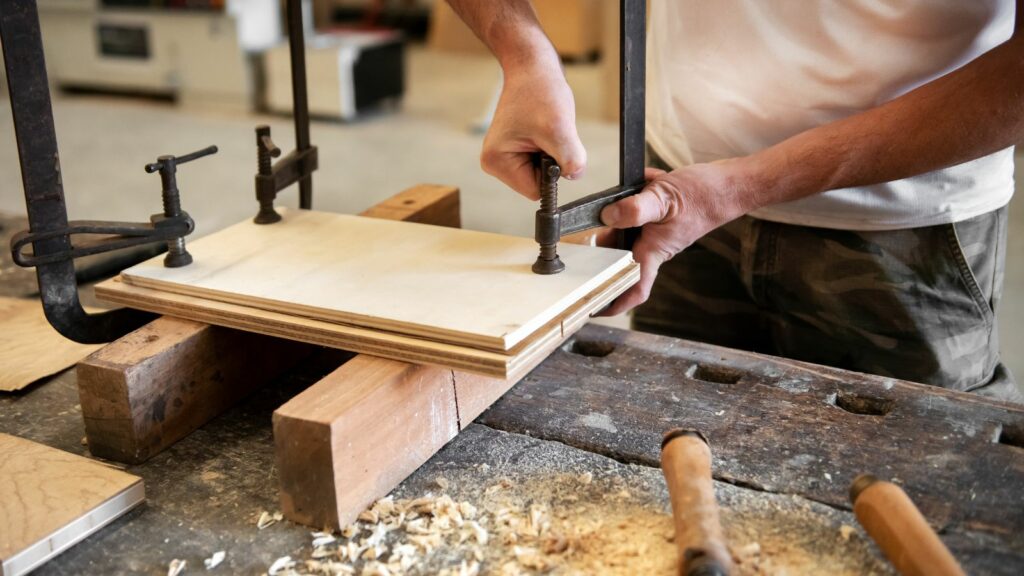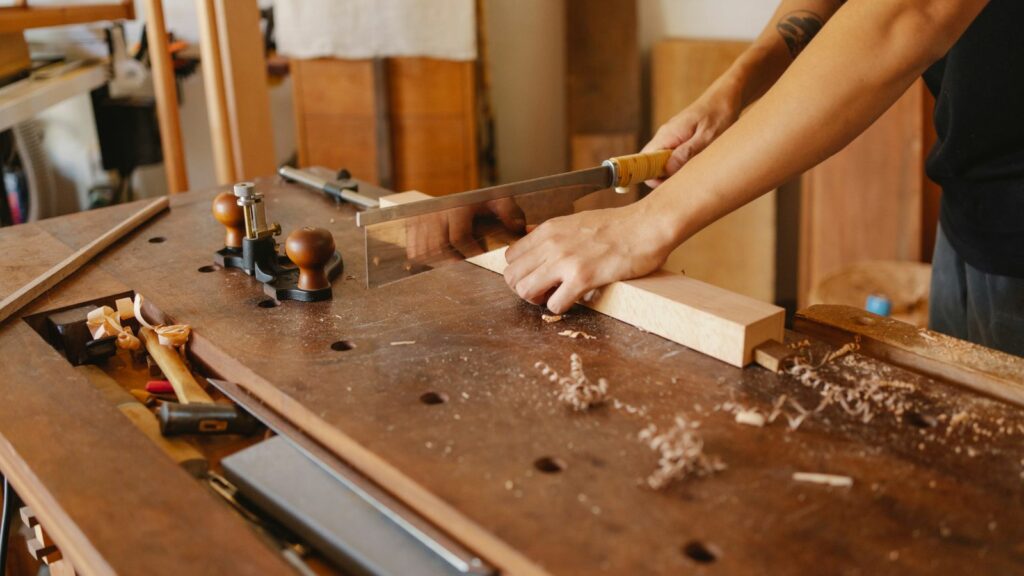Woodworking, an ancient craft, has evolved over centuries, but the joy of creating something with one’s own hands remains timeless. Whether you’re a seasoned carpenter or a novice with a newfound love for this craft, there’s always room for improvement. This article aims to enhance your basic woodworking tips skills with some basic yet effective tips.
Basic Woodworking Tips
Going further into the world of basic woodworking tips involves understanding fundamental principles. By understanding the basics, achieving better efficiency and satisfaction in projects becomes feasible.

Selecting appropriate wood plays a pivotal role in woodworking success. For high-quality results, it’s pivotal to choose wood based on project needs. For instance, hardwoods like oak, mahogany, and walnut are ideal for furniture, while softwoods like pine and fir suit outdoor projects and carpentry best. Additionally, special-grade woods like birdseye maple or figured cherry offer unique appearances for decorative pieces.
No workshop reaches its full potential without key tools and equipment. For starters, consider including a circular saw for cutting straight lines, a table saw for precise large cuts, and a jigsaw for irregular cuts. On the other hand, a miter saw excels in making angle cuts. For finer detail work, a handheld router outlines designs, while a stationary router table offers more stability. Lastly, power drills and panel saws prove indispensable for substantial projects. Always remember, the quality of tools significantly impacts the final product in woodworking.
Safety Tips for Woodworking
In the realm of basic woodworking tips, safety is a paramount concern. Crafting beautiful pieces involves interacting with potentially dangerous tools, making it crucial to build a substantial knowledge base on safety measures.

Handling woodworking tools safely isn’t just a recommendation, it’s a requirement. Carpenters operate with heavy-duty appliances like power drills, table saws, and circular saws, which demand careful use. By securely holding the tool, positioning themselves properly, and focusing on the task, they dramatically reduce the risk of injury. For instance, when using a circular saw, it’s crucial to grip the handle firmly, maintaining a secure hold throughout the cutting process, keeping hands away from the blade, and ensuring the workpiece is supported adequately.
Beyond safe tool use, personal protective equipment (PPE) significantly contributes to a woodworker’s safety strategy. Wearing appropriate safety gear such as safety goggles, ear protection, sturdy footwear, and durable gloves provides a shield against potential accidents that may occur in a woodworking environment. For example, safety goggles protect the eyes from flying wood chips and sawdust, while ear protection minimizes damage from the continuous noise of power tools. Clearly, choosing the right PPE is an essential part of maintaining safety standards in woodworking.
Tips for Improving Your Woodworking Skills

In the world of woodworking, everyone makes mistakes, but the key to progress lies in treating these mistakes as learning opportunities. Compare them to insights gleaned from woodworking literature, online forums, and the experiences of veteran woodworkers. Each error provides a unique circumstance to expand your knowledge base, offering a chance to understand what went wrong, why it happened, and how to avoid similar pitfalls in the future.
While experience is a valuable teacher, structured learning through woodworking education and training programs can considerably expedite skill acquisition. Enroll in local vocational schools offering carpentry courses, or consider short-term workshops and seminars, where you browse a diverse range of topics from tool handling to joinery techniques. In this digital age, online courses provide a flexible alternative, often including video tutorials, forums for peer interaction, and evaluations to gauge progress. Accredited certifications earned upon completing such programs can boost credibility, especially for those considering woodworking as a professional career.
Practicing Safety
Woodworking isn’t just a craft, it’s a journey of continuous learning and improvement. It’s about mastering the art of selecting the right tools, understanding wood grains, and most importantly, practicing safety. The right type of wood and quality tools can make a significant difference in the final product. But remember, it’s not just about the tools, it’s also about the hands that wield them.

